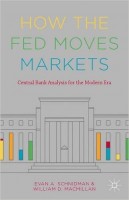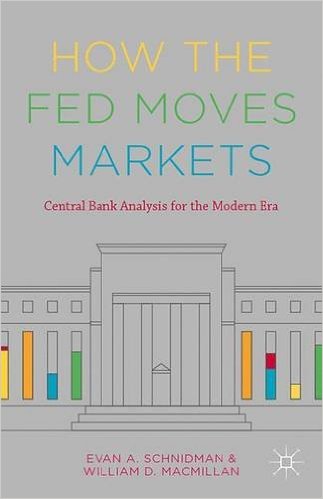 Authors: Evan A. Schnidman and William D. Macmillan
Authors: Evan A. Schnidman and William D. Macmillan
Publisher: Palgrave Macmillan – 198 pages
Book Review by: Sonu Chandiram
Central banks, such as the United States Federal Reserve Bank and the Bank of Japan, to give two examples, manage a country’s money supply and thereby its interest rates. They hold the monopoly to make new money by physically printing it or creating it electronically. The new money is then pumped in, or added into a country’s existing money supply, thereby increasing supply and lowering demand for it, which lowers interest rates. Essentially, an interest rate is the price of money.
We all know that when supply exceeds demand for products and services, their prices go down. And vice versa. The law of supply and demand also drives the price of money or its interest rate. Of course, there are many types of interest rates, and this is a simplistic explanation, to say the least.
But I state here that understanding this main role of central banks – as provided in this enlightening book – helps you develop a proper framework to learning how to manage your money and your investments. Money is an all-pervasive element of our daily lives, and what you and I discover in this work can certainly help improve our financial and overall well-being. If you understand the simple principle that money makes money, and you use it to your advantage, you can be a successful and wealthy investor.
Central banks also set the reserve requirement for all banks and credit unions in a country. This means that for all the money that is loaned out by them to their customers, a given minimum amount – a portion of all the money lent out – is required by law to be held in reserve by that lending institution.
To give you a perspective of what is covered in this book, I present to you below its contents. You may pick and choose which chapters to read first, or you may read this book from the beginning to end first, then closely read and understand the various topics and points in the different chapters:
- Emergence and Evolution: The Story of the Fed
- Origins from Chaos to Structure
- Independence: Wars, Depressions, and Politics
- Centralization: The Rise of Democracy
- Transparency: Data Meets Democracy
- Fed Watching: Sentiment Analysis and Data-Driven Investing
- The Briefcase Watch: Fed Watching at Its Finest?
- Data-Driven Fed-Watching: Comprehensive, Unbiased, and Quantitative
- Fixed-Income Investing: Fed Sentiment Drives Bonds
- Equity Market Investing: Macro Matters
- Forecasting Policy: Market Response to Fed Communication Trends
- FOREX Investing: Central Bank Sentiment Data Across the Globe
- Global Monetary Policy: Analyzing Central Banks Around the World
- European Central Bank Sentiment: Decoding a Complex Monetary Union
- Bank of England Sentiment: The Origin of Modern Central Bank Communications
- Bank of Japan Sentiment: Monetary Clues in Lost Decades
- Reserve Bank of Australia Sentiment: Australia as a Proxy for China
- Global Sentiment: International Central Bank Transparency
Most of us are aware that when interest rates are lower (signifying that a country’s money supply is at least ample, if not growing) the share prices of companies, both public and private, typically rise. Lower interest rates also lead to rise in the prices of bonds (promissory notes) and real estate, commercial and residential.
A central bank is also a lender of last resort. One example is that during the 2008-09 “housing bust” when borrowers could not make their mortgage payments and were losing their homes to foreclosures, the banks were given “bailouts” by the Federal Reserve. Some of those banks’ customers were given reprieve and saved their homes from foreclosure by “re-structuring” their borrowing arrangements.
We see from the foregoing that central banks are quite powerful influencers of peoples’ financial behavior. The people include active investors and risk-takers such as business owners, buyers and sellers of stocks, bonds and real estate, and passive investors who seek regular and higher interest income.
The correct and valid interpretation of what central bankers say or write in their communications is crucial not only to investors but also to everyone, because it can mean gain or loss of money. Oftentimes, it is difficult to understand the true meaning of what is said or written, and more importantly, whether those statements will impact the various markets – stocks, bonds, real estate, etc. – negatively or positively. This book is a valuable guide to that important task of interpretation.
Authors:
Evan R. Schnidman and William D. Macmillan founded Prattle, a text analytics company, to showcase their novel methodology and innovative financial data on central bank communications.
Chief Executive Officer Schnidman holds a PhD from Harvard University, and has extensive experience in finance and political economy.
Chief Technology Officer Macmillan holds a PhD from the University of Michigan, and has substantial experience as both a professional statistician and a corporate data scientist.







